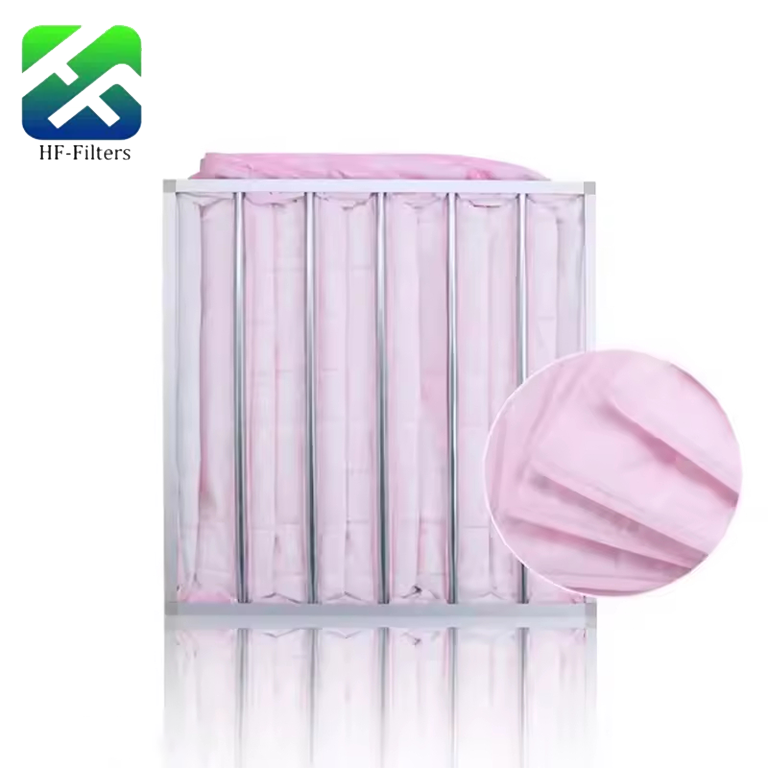If you’ve shopped for air filters—whether for your home AC or your office’s ventilation—you’ve definitely seen “F8 medium-efficiency” on the label. I work in facility management, so I’ve tested my fair share of filters, and F8s are some of the most reliable ones out there. Let me break down what the F8 rating really means, why it matters, and how to pick one that actually works for you—no fancy jargon, just straight talk.
First Off: What Is an F8 Medium-Efficiency Filter?
Let’s start simple: an F8 medium-efficiency filter is just a specific type of air filter that’s pretty common in homes, offices, even small clinics. It’s not the “ultra-high-end” HEPA filter you’d use in a lab, but it’s way more effective than those cheap disposable ones from the grocery store. Its main job? Grab the gross stuff out of the air so you’re not breathing in dust, pollen, or worse.
That “F8” part is key—it’s the filter’s efficiency rating. Basically, it tells you how well it catches small particles. An F8 filter can reliably trap particles that are 0.3 microns or bigger. Wanna picture that? A human hair is about 50 microns thick—so 0.3 is tiny. We’re talking dust mites, pollen grains, even most bacteria and viruses. I swapped my home’s old filter for an F8 last spring, and my wife’s seasonal allergies? Way better. No more sneezing through dinner.
Why F8 Filters Are Actually Worth It
F8s aren’t just “meh”—they’re a sweet spot for most people. Here’s why they matter:
First, they protect your lungs. I had a tenant once who complained of constant coughing—turns out their old filter wasn’t catching anything. We put in an F8, and within a week, their cough was gone. It grabs those fine dust particles and pollen that irritate your throat and sinuses. For anyone with asthma or allergies, this is non-negotiable.
Second, they cut down on germs. During flu season, we always swap our office’s filters to F8s. They block most bacteria and viruses from circulating through the vents—last year, our team had way fewer sick days than usual. It’s not a substitute for hand-washing, but it’s a huge help in keeping indoor spaces from turning into germ factories.
And bonus: they help with odors and yucky gases. We have a break room in the office where people microwave fish (don’t ask), and since we put in F8s, the smell doesn’t linger all day. They don’t eliminate every odor, but they definitely take the edge off, making the air feel fresher.

How to Pick an F8 Filter That Doesn’t Suck
Not all F8 filters are created equal—trust me, I’ve bought duds. Here’s how to choose one that works:
First, match it to your space. A tiny F8 filter won’t do anything for a 1,000-square-foot living room. Check your AC or purifier’s manual for the right size and model. If you’re not sure, just take your old filter with you to the store—they’ll match it.
Second, skip the no-name brands. I once bought a cheap F8 off Amazon that looked the part, but after a month, it was still white (a good filter gets gray with dust!). Stick to brands you’ve heard of—3M, Honeywell, even your local hardware store’s house brand. They’re tested, so you know they’ll actually trap particles.
Third, don’t overspend. You don’t need the “premium” F8 that costs twice as much. Most standard F8s work just as well. I buy mine in bulk from a trusted supplier—saves money, and I never run out.
Final Thought: F8s Are the Sweet Spot
At the end of the day, F8 medium-efficiency filters are perfect for most people. They’re not too expensive, they work well, and they fit in most standard systems. I’ve used them in my home, my office, even my mom’s apartment—and they’ve never let me down. If you want cleaner air without dropping hundreds on a fancy system, an F8 is the way to go.
Just remember: size matters, stick to reliable brands, and replace it every 6-8 months (sooner if you have pets or lots of dust). Your lungs will thank you—and so will anyone with allergies in your space.

